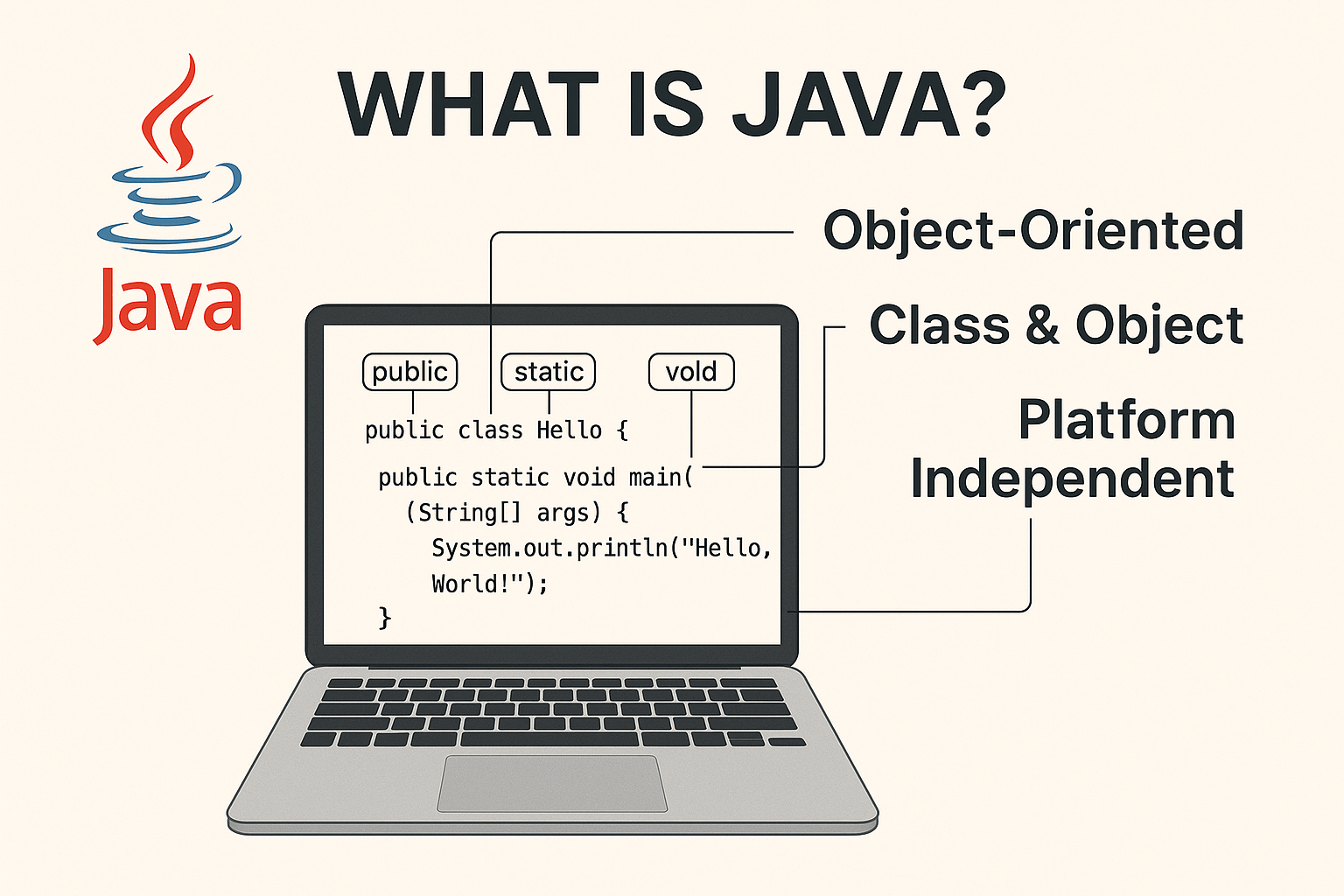Java as a Metaphor for Growth: Love Letters in Code
An Image That Speaks Beyond Sight

What if a line of code was more than logic? What if it whispered a love letter to the self — a declaration of becoming? In the soft glow of a laptop screen, public static void main flickers to life, not as mere syntax, but as a symbol of arrival. Hello, World! is not just a technical ritual; it’s a first kiss with potential. It is the moment your inner narrative compiles into something real.
This image of Java, familiar to many developers, holds more than just educational value. It holds a seed of transformation. Through it, we glimpse how even the most mechanical languages can mirror the journey of the human heart — organized yet wild, structured yet unpredictable, logical yet brimming with passion.
The Heart’s Memory of Feeling
Every method begins with intention. So does every season of growth in life. The phrase public static void main signifies where a program starts — a place of power and vulnerability. Similarly, our stories begin in tender places. First jobs, breakups, creative pursuits — they echo with quiet courage.
In fact, Java teaches us that every moment of execution begins with clarity. We declare our path, even if unsure where it ends. That declaration — like saying “I love you” for the first time, or choosing to heal — marks a return to ourselves. It’s how memory forms not only through what happens, but through what we choose to initiate.
Moreover, the object-oriented nature of Java reminds us: we are more than a single function. We contain layers, instances, memories — parts that interact, evolve, and deepen. Each object we create holds both logic and longing.
Between Stillness and Becoming
Java’s platform independence is not just a technical marvel. It’s a soulful metaphor. To be interpreted anywhere, on any system, is to be universally understood. It’s the dream of every human heart — to remain wholly itself, no matter where it lands.
In relationships, in careers, in creative life — we crave that kind of freedom. To be read as we are, not as others expect us to be. To express our truth in a way that transcends culture, code, or platform. Java doesn’t just run; it adapts. And in that fluidity lies our most romantic strength: resilience without erasure.
Therefore, growth is not rigid. It is graceful. And true independence isn’t about detachment — it’s about remaining authentic, wherever we are compiled.
Wounds, Wisdom & Gentle Healing
Even the most elegant code needs debugging. Likewise, our emotional scripts — written through love, failure, and rediscovery — require tending. Java teaches us that an error doesn’t mean we are broken. It means there’s more to understand.
When our inner life throws exceptions, we don’t give up. We trace the source. We listen. Healing, after all, is just emotional debugging — a compassionate conversation with what no longer serves. Each revision we make, each piece of wisdom we gather, turns confusion into clarity.
In contrast to shame, Java offers us a model of tender iteration. We are not meant to be flawless. We are meant to be evolving — and deeply human.
The Shared Breath of Culture
Across continents, Java connects people who may never meet — yet write the same language of intention. It becomes a digital dialect of shared dreams, where each function is an offering, each loop a rhythm of perseverance.
Isn’t that what culture is? Not static tradition, but a living, breathing inheritance of ideas. The more we share, the more we realize we are not separate. Java, like music or poetry, builds bridges between creators. It becomes an ecosystem of empathy — proving that even in logic, love lives.
Therefore, to code is not just to create. It is to believe that what we build has meaning. It is a modern act of intimacy. A structure with soul. A whisper from one heart to another: “I see you. I understand.”
Inspired by this reflection? Find more moments of meaning through our curated collections:
To explore how creativity and healing intertwine, visit Healthline on Art Therapy.



